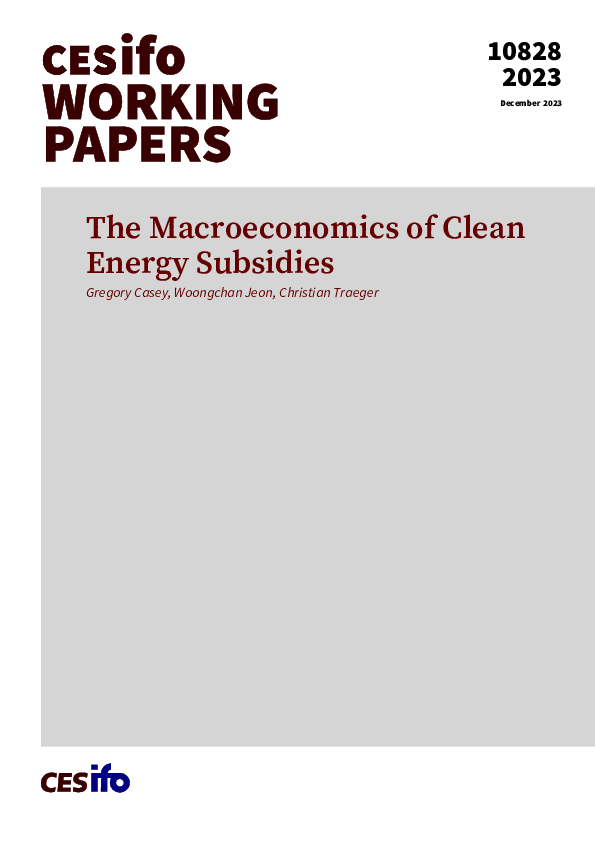The Macroeconomics of Clean Energy Subsidies
CESifo, Munich, 2023
CESifo Working Paper No. 10828

We study clean energy subsidies in a quantitative climate-economy model. Clean en-ergy subsidies decrease carbon emissions if and only if they lower the marginal product of dirty energy. The constrained-efficient subsidy equals the marginal external cost of dirty energy multiplied by the marginal impact of clean energy production on dirty energy production. With standard functional forms, two factors determine the impact of clean subsidies on dirty energy production: the elasticity of substitution between clean and dirty energy and the price elasticity of demand for energy services. At standard parameter values, clean production subsidies increase emissions and decrease welfare relative to laissez faire. With greater substitutability between clean and dirty energy, the subsidies in the Inflation Reduction Act can generate modest emissions reductions. Even in this more optimistic scenario, a clean subsidy generates significantly higher emissions and lower welfare than a tax on dirty energy.
Resources and Environment
Energy and Climate Economics